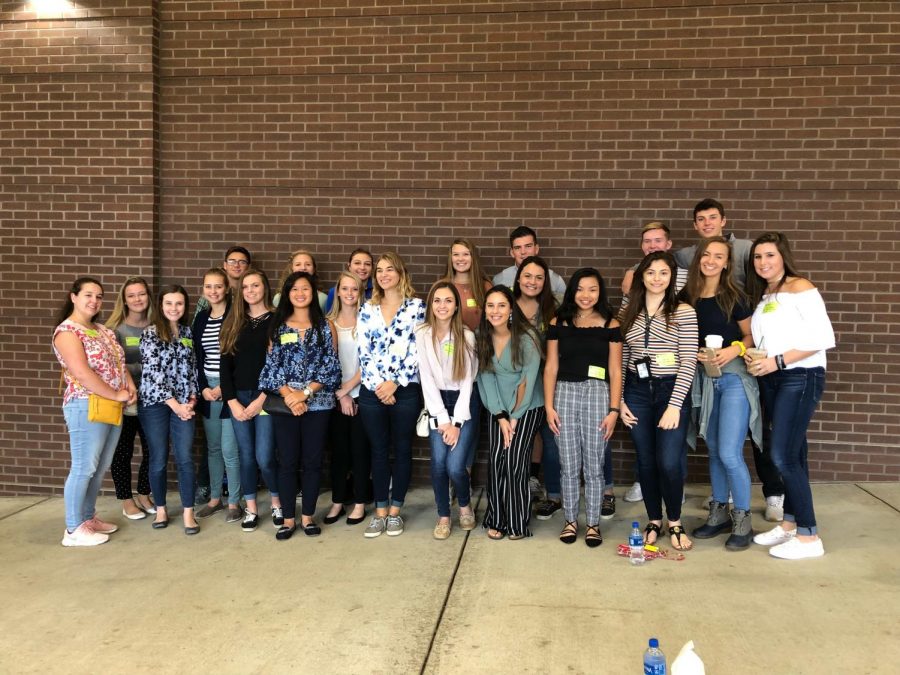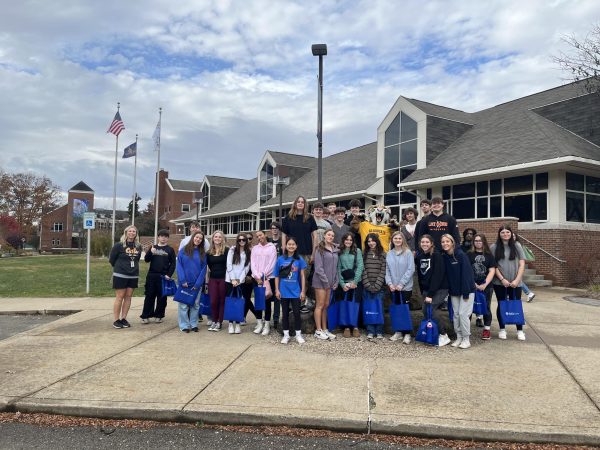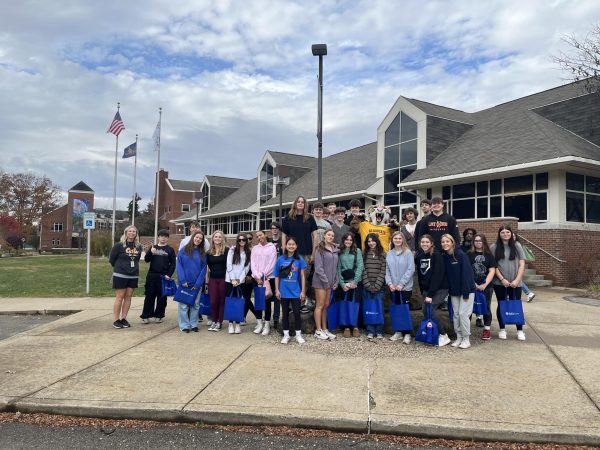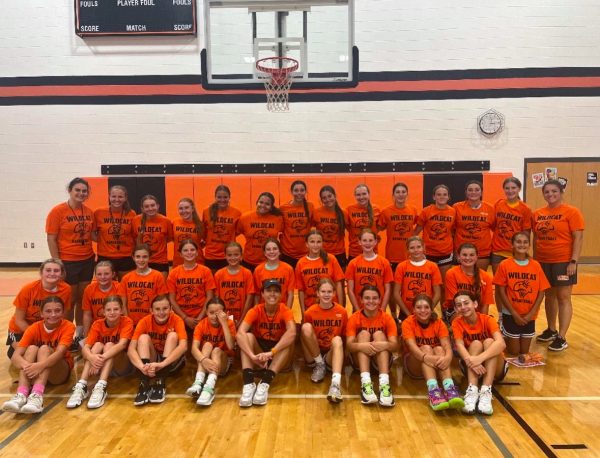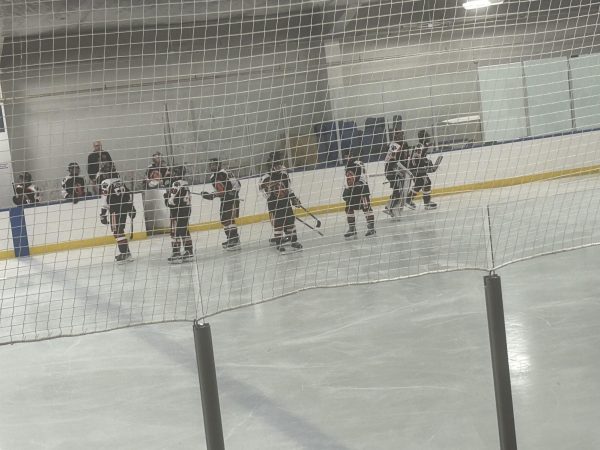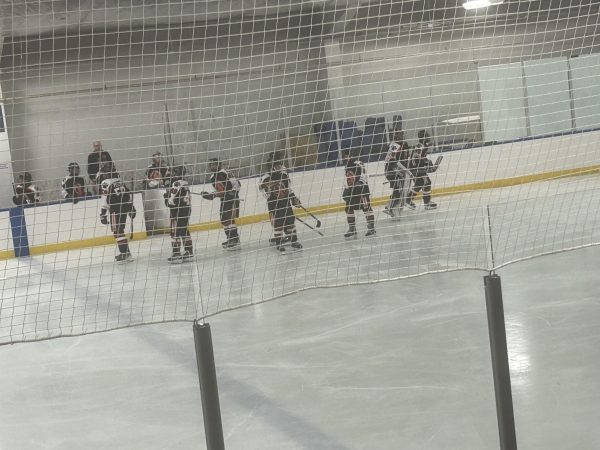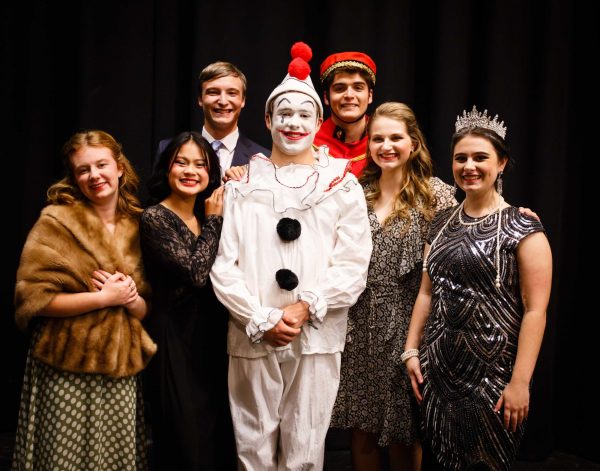Walking in the Field of Medicine
One may feel anxious feelings when stepping foot into a suspenseful situation. UPMC Children’s Hospital of Pittsburgh makes children feel as if the reality of unfortunate conditions are not affecting the life they would like to live.
Seniors from Derry Area High School (DAHS), Greater Latrobe Senior High School (GLSHS), and Ligonier Valley High School (LVHS) are eligible to apply into a semester program called Allied Health. The program is offered by Eastern Westmoreland Career and Technology Center (EWCTC).
Mrs. McCreery, the instructor of Health Occupations Technology at EWCTC, also runs Allied Health outside of the primary class she teaches at the career center. About 20 students per fall and spring semester are selected among the three schools to take part in the program.
The students just recently began their first job shadowing at different places including Kids Care Pediatrics, Denis Family Chiropractic, IN-Sync Rehab, Loyalhanna Care Center, Mountainview Specialty Care Center, Excela Square, and various departments in Latrobe Area Hospital. This is comparable to clinical rotations that these future doctors, nurses, etc. may experience.
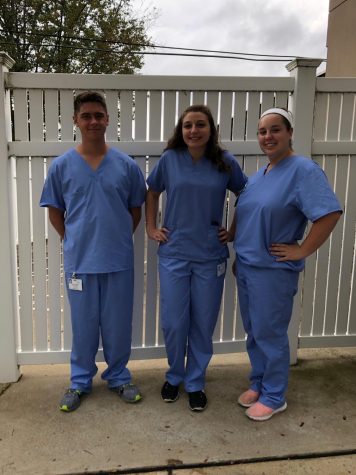
“The Program is unique because the teacher does all the work for you… she sets up all the job shadows for you as well as guest speakers. The student gets to observe the operating room and you get classroom time as well,” said McCreery. “We are so blessed to have such an amazing hospital within our limits! There is every job you could possibly think of in this hospital! Every student that is truly interested should take full advantage of any internship that is available.”
The entire class traveled to UPMC Children’s Hospital of Pittsburgh in early October.
The field trip began with a look at the rich history behind the hospital. Since 1890, the hospital has grown from what started as a donated single cot for children to use by Kirk LeMoyne to a hospital people travel to from foreign countries and across America to get the best specialized care. The hospital is now ranked one of the best children’s hospitals in the world.
Children’s Hospital occupies 10 acres of space in the Pittsburgh area. Its unique design houses physicians, nurses, and families. UPMC Children’s Hospital of Pittsburgh is home to around one thousand Doctors, all specializing in at least one of nine pediatric specialties.
The most inspiring thing that sets this children’s hospital apart from any other one around the world is the significance of everything, from the wall decals to the layout of the different floors. “My favorite part about the hospital was their artwork and displays. They made sure they had a meaning to each piece they had and it was really touching,” said senior, Shelby Dean.
UPMC takes pride in the hospital by making sure every child leaves healthier than when they came in. The nurses and doctors use the knowledge they have to administer the proper care so children can get back to being kids as quickly and efficiently as possible.
Their mission statement is: UPMC Children’s Hospital of Pittsburgh is dedicated to improving the health and well-being of children, teenagers, and young adults through excellence in patient care, teaching, research, and advocacy.
Children do not need to worry about feeling unsafe once they walk through the doors because all visitors who need access to Orange inpatient elevators must wear an ID badge. In receiving a badge, a background check is completed to ensure the safety of everyone, but the children especially.
From the minute a new patient walks in, the staff provides all the care a child would possibly need. The hospital accepts patients up to age 26 and has exceptions for those older with specialized needs.
The transformation corridor that leads towards the main lobby area welcomes children and their families with open arms. On one side of the corridor, a long mural represents the metamorphosis of butterflies, showing how it starts as a caterpillar to how it turns into a beautiful butterfly. The transformation is a metaphor for illness to health. It helps children visualize the process of healing in a more positive way. Similarly, the floor tries to convey a comparable message as it illustrates the four seasons changing by having snowflakes, flowers, and other shapes on the floor.
To recognize the children who come to Pittsburgh from all around the world for treatment, pieces from Asia, Haiti, France, Germany, and Canada are displayed. Along with the cultural work, a welcome sign is at the beginning of the corridor translated into 25 different languages.
Children’s Hospital tries to send a message along with the sign to allow children to realize they are welcome no matter what race, gender, ethnicity, or religion. The hospital is supposed to be seen as a diverse place and the staff wants to make sure everyone can connect in some way to something.
A chapel is accessible to any of the patients and their families. The design of the chapel is simple and suitable to all religions. Curtains in the chapel easily can be moved based on specific traditions a religion may follow such as having males and females separated. No religious symbols are on the walls to promote any one religion. A stripe is within the flooring that points in the direction to Mecca.
“I think it was really eye opening to see and understand the reasoning behind everything at Children’s Hospital. I think it is really great that they strive to make the experience as ‘fun’ and as stress free as possible for the patients that unfortunately have to be there,” said senior, Addie Gardner. “Knowing I want to become a physician assistant, it is exciting to think about being able to someday maybe work in Children’s Hospital myself. I think because it has such a warm and welcoming environment, it would be a good place to work. And they have a Starbucks!”
Sculptures and photographs are displayed of local icons of Pittsburgh. Sports heroes are recognized in pieces as well as role models such as Andy Warhol and Mr. Rogers. Some of the artwork included in the building is from the old building founded in 1887, which was located in Oakland. The hospital appreciates the community for all of the generous contributions and donations towards the art selection because the budget for artwork was limited.
The Allied Health students got a tour of the whole building, inside and out. Two physicians led them Through the emergency departments, outpatient, inpatient, and intensive care units.
“They actually get to see how and why the hospital was developed the way it was. They get to see real life situations. They get to see newborn children with many tubes hooked up to them. They soon learn that it is the small things in life that really matter,” said McCreery.
“Before the experience, I was unaware of all the different departments within the hospital. This helped me grow because I gained a better understanding and appreciation of how they all work together in order to provide the best care for patients,” said Mia Lynn, senior at LVHS. “I absolutely loved witnessing the smiles on kids’ faces as we wandered through the hospital. Knowing that I may become the reason to make kids smile like that, motivates me to pursue my future. I can’t wait to help those in need of healthcare and have the opportunity one day to treat kids.”
The patient rooms were built to make children feel as if they were in their own bedroom by having a headboard, sofa, hardwood floors, and regular doors you would possibly see in a home. “While visiting Children’s, I enjoyed touring the in patient subunit and the rooms. There were so many intricacies that ensured a sense of comfort for the kids and simply transformed the place into a home away from home,” said Lynn.
Often times, children may need a CT scan or MRI. The narrow machines tend to scare children or make them anxious because of the intimidating size or loud noises. Luckily, the rooms are fully decaled to make them feel ‘under the sea’ or in ‘outer space.’ Since the radiations are relatively short, doctors did not like having to sedate the child for that short of time. By playing music to the theme of the room and by having nurses telling stories, the hospital has gone from sedating over hundreds of children a year to approximately only ten.
The hospital is designed to be interactive for children and has a bright, positive atmosphere no matter where you are. “I liked seeing all of the behind the scene technology and reasoning that makes the hospital efficient and not chaotic for the patients,” said Gardner.
In every corner and on every wall, something to catch one’s eye is seen. The outside garden portraying the sun, moon and stars is one of the most creative works on the property. In the evening, the special lights inside the building turn on and stars project on the ceiling to make children picture being outside. The staff wants the patients to feel a sense of welcome and comfort.
“I know I will learn something new each time I go. For example, there is a place that looks like a ‘porch’ within the hospital. It has bugs and lights,” said McCreery.
On each floor, playrooms are added as a place for children to learn and grow, but also get their minds off of the reason why they are in the hospital.
Austin’s Playroom was a feature added after the experience Mario and Nathalie Lemieux had in 1996 when their son Austin was born. The Lemieux’s had two toddlers at the time plus a premature baby who spent nearly three months in the Neonatal Intensive Care Unit.
These rooms were created to help alleviate pain that families may be going through during extremely hard or extended medical situations. The Mario Lemieux Foundation has established a total of 36 Austin’s Playrooms around the city, all active today. Some locations include Magee-Women’s Hospital, Jefferson Hospital, Butler Memorial Hospital, and Canonsburg Hospital.
“Going to children’s hospital definitely made me more passionate for going into healthcare. Seeing the hospital and the children really humanized the field for me and made it more personal,” said Dean. “I definitely plan to actually go and work at children’s hospital in Pittsburgh. I’m excited to work in a hospital that I’m already in love with.”
22 students from Derry, Ligonier, and Latrobe had an eye-opening experience like no other and will hopefully use it to help them succeed in their future endeavors.

I am currently a Senior at Greater Latrobe Senior High School and hope to pursue a career in the medical field after high school. I am still in the process...


